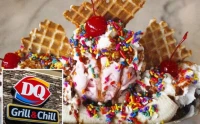Unearthing the Secrets of Caldera: Nature's Hidden Messages
Okay, folks, buckle up because we're diving deep into something truly fascinating: Calderas. Now, you might think, "Aris, a caldera? Isn't that just a big hole left by a volcano?" And you wouldn't be entirely wrong, but that's like saying the Mona Lisa is just a painting. There's so much more bubbling beneath the surface—literally! I've been poring over some research, and what's emerging is a picture of calderas as incredibly complex, dynamic systems that are constantly whispering secrets about our planet. And I, for one, am listening intently.
One paper I stumbled across was analyzing earthquake activity within the Campi Flegrei caldera in Italy. Now, I know, earthquakes near Naples don't exactly sound like a cause for celebration. But bear with me! The researchers were looking at the relationship between earthquake rupture velocity—that's how fast the fault line breaks, for those of you not fluent in geophysics—and stress drop, which is the amount of stress released during the quake. What they found is that these tiny tremors are actually giving us clues about what's happening deep underground, about the movement of magma, the pressure of hydrothermal fluids, and the very mechanics of the rocks themselves. It's like having a planet-sized stethoscope!
Think of it like this: imagine you're trying to understand how a complex engine works, but you can't open it up. You can only listen to the sounds it makes, feel the vibrations, and measure the temperature. That's what these scientists are doing with Campi Flegrei, and the earthquakes are their data points. The fact that they're using sophisticated techniques like the "LPDT-method"—logarithm of the P-wave displacement amplitude vs time, which, in simpler terms, means they're analyzing the subtle wobbles in the earth to understand the bigger picture—just blows my mind.
But here's where it gets really exciting. By understanding the dynamics of these small earthquakes, we can potentially get a better handle on predicting larger, more dangerous events. It's not about stopping volcanoes or earthquakes, that's not realistic. It’s about being prepared, about giving people the information they need to stay safe. And that, my friends, is a goal worth pursuing. This isn't just about geology; it's about humanity. The details of the study are available in "Earthquake rupture velocity and stress drop interaction in the Campi Flegrei volcanic caldera".

The other study I read was about the Brooks Caldera 8 running shoe. Yes, you read that right. A running shoe. What does that have to do with volcanic activity? Well, nothing directly, but it highlights the importance of understanding the limits of any system, whether it’s a seismic zone or a running shoe. The review pointed out that the Caldera 8 wasn't the best choice for those seeking maximum cushioning or runners with wide feet. And it reminded me that even seemingly unrelated fields can offer insights into each other.
What if we could adapt the sensor technology used in running shoes—you know, the kind that tracks your stride and impact—to monitor ground deformation in calderas? Imagine swarms of tiny, inexpensive sensors scattered across the landscape, constantly feeding data back to a central system. We could create a real-time, high-resolution map of ground movement, giving us even earlier warnings of potential volcanic activity. That’s the kind of cross-disciplinary thinking that gets me really fired up! When I first had that thought, I actually had to stop and pace around for a minute. It was that exciting!
Of course, with any technology that gives us greater insight into the natural world, there are ethical considerations. Who gets access to this information? How do we ensure it's used responsibly? How do we avoid creating panic or misinformation? These are questions we need to address proactively, as we move forward. It’s our duty to be responsible stewards of the knowledge we gain.
The Earth is Speaking; Are We Listening?
I truly believe that by studying calderas, by listening to the whispers of the earth, we can unlock a deeper understanding of our planet and ourselves. This isn't just about mitigating risk; it's about appreciating the incredible power and complexity of the natural world. It's about using our ingenuity to build a safer, more resilient future. And honestly, what could be more inspiring than that?










